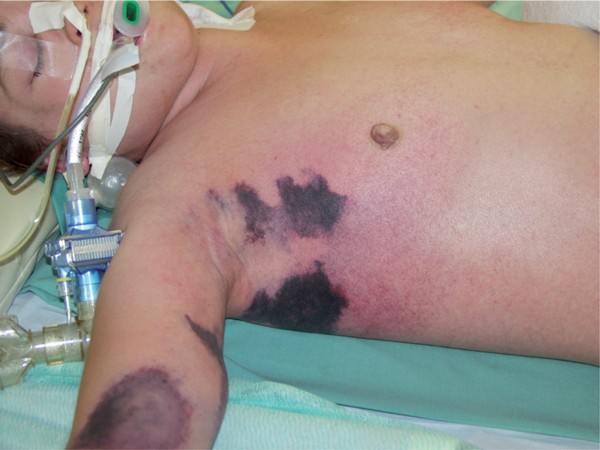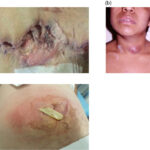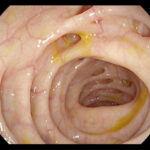Anaerobic bacteria are a significant cause of skin and skin structure infections (SSTIs), particularly in polymicrobial wounds. These pathogens thrive in environments with low oxygen tension, such as devitalized tissue, necrotic wounds, abscesses, and deep surgical sites. Understanding the role of anaerobes in SSTIs is critical for timely diagnosis and effective intervention.

Common Anaerobic Pathogens in SSTIs
Anaerobic skin infections are often caused by a variety of bacterial species, either as sole pathogens or in synergy with aerobes.
Frequently Isolated Anaerobes:
- Clostridium spp. – Especially C. perfringens in gas gangrene
- Bacteroides fragilis group – Found in mixed infections, especially below the waist
- Peptostreptococcus spp. – Common in chronic wounds and diabetic foot infections
- Fusobacterium spp. – Found in head and neck infections
- Prevotella spp. – Associated with bite wounds and perianal abscesses
These organisms are typically part of the normal flora of mucosal surfaces but become pathogenic when introduced into subcutaneous tissues.
Pathophysiology and Conditions Favoring Anaerobic Infection
Anaerobic SSTIs arise when oxygen-depleted environments allow anaerobes to proliferate. Contributing factors include:
- Poor perfusion (ischemic limbs, vascular disease)
- Necrotic or crushed tissue (trauma, pressure ulcers)
- Foreign material (sutures, implants)
- Diabetes mellitus and immunosuppression
- Penetrating trauma involving mucous membranes or contaminated wounds
Anaerobes release tissue-destructive enzymes, hemolysins, and toxins, promoting tissue necrosis and systemic toxicity.
Clinical Presentations of Anaerobic SSTIs
Anaerobic infections manifest with specific characteristics that distinguish them from typical aerobic SSTIs.
Key Features:
- Foul-smelling discharge
- Gas production in tissues (crepitus)
- Tissue necrosis and gangrene
- Black discoloration or skin sloughing
- Minimal erythema but deep tissue involvement
- Systemic symptoms (fever, hypotension, tachycardia)
Common Syndromes:
- Anaerobic Cellulitis: Mild to moderate spread in subcutaneous tissue with gas formation
- Necrotizing Fasciitis: Rapidly spreading infection requiring surgical emergency
- Gas Gangrene (Clostridial Myonecrosis): Severe muscle necrosis with systemic toxicity
- Abscesses: Localized purulent collections, often polymicrobial
Diagnostic Approach to Anaerobic SSTIs
Clinical Suspicion:
Diagnosis is based on history, risk factors, and typical features such as malodor and gas formation. Imaging and microbiological confirmation are essential.
Laboratory and Imaging:
- Wound culture under anaerobic conditions
- Gram stain showing gram-negative rods or spores (Clostridium)
- CT/MRI for gas in tissues and extent of infection
- Blood cultures in systemic involvement
- Lactate levels and WBC count for sepsis risk
Prompt specimen collection and appropriate transport under anaerobic conditions are critical for accurate results.
Antimicrobial Therapy for Anaerobic Skin and Soft Tissue Infections
Timely initiation of empirical broad-spectrum antibiotics is essential, later narrowed based on culture.
Empirical Regimens:
- Piperacillin-tazobactam
- Carbapenems (e.g., meropenem, imipenem)
- Clindamycin (especially for toxin inhibition in Clostridial infections)
- Metronidazole (highly active against most anaerobes)
- Amoxicillin-clavulanate (for moderate infections)
Targeted Therapy:
Based on sensitivity profiles, especially for resistant Bacteroides fragilis strains with beta-lactamase production.
| Pathogen | Preferred Therapy |
|---|---|
| Clostridium spp. | Penicillin G + Clindamycin |
| Bacteroides fragilis | Metronidazole or Carbapenems |
| Peptostreptococcus | Penicillin or Beta-lactamase inhibitors |
| Fusobacterium | Metronidazole or Clindamycin |
Surgical Management and Debridement
Surgical intervention is often the cornerstone of successful treatment in anaerobic SSTIs, particularly in necrotizing infections.
Surgical Actions:
- Early and aggressive debridement
- Exploration to assess tissue viability
- Drainage of abscesses
- Amputation in advanced gangrene cases
- Reconstruction after infection control (skin grafts, flaps)
Surgical delay increases mortality in necrotizing infections.
Supportive and Adjunctive Therapies
Hyperbaric Oxygen Therapy (HBOT):
Used in selected cases such as Clostridial myonecrosis to enhance oxygenation and inhibit anaerobic growth.
Intravenous Immunoglobulin (IVIG):
Considered in severe toxin-mediated syndromes (e.g., toxic shock-like presentations) for neutralizing bacterial toxins.
Nutritional and Glycemic Support:
Essential in diabetic patients to improve wound healing and reduce recurrence.
Prevention Strategies for Anaerobic Skin Infections
Hospital and Surgical Measures:
- Proper wound hygiene and timely closure
- Adequate debridement of contaminated wounds
- Perioperative antibiotic prophylaxis in high-risk procedures
- Glycemic control in diabetic patients
- Prompt removal of necrotic tissue or foreign material
Prognosis and Outcomes
The prognosis is favorable in mild infections with prompt therapy. However, necrotizing or gas-producing anaerobic infections are associated with high morbidity and mortality.
Poor Prognostic Indicators:
- Delayed diagnosis
- Inadequate surgical debridement
- Hypotension and sepsis
- Infection with toxin-producing strains (e.g., C. perfringens)
- Immunosuppression or organ dysfunction
Skin and skin structure anaerobic infections are clinically significant and often life-threatening. They demand rapid recognition, broad-spectrum empiric therapy, and surgical precision. Optimizing patient outcomes requires a coordinated approach involving accurate diagnostics, microbiological expertise, and aggressive management strategies. Preventive care and risk mitigation remain key in high-risk populations.

